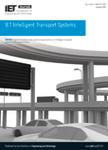版权所有:内蒙古大学图书馆 技术提供:维普资讯• 智图
内蒙古自治区呼和浩特市赛罕区大学西街235号 邮编: 010021

作者机构:Zhejiang Univ Coll Control Sci & Engn State Key Lab Ind Control Technol Hangzhou Peoples R China
出 版 物:《IET INTELLIGENT TRANSPORT SYSTEMS》 (IET Intel. Transport Syst.)
年 卷 期:2020年第14卷第14期
页 面:1997-2009页
核心收录:
学科分类:0808[工学-电气工程] 08[工学] 0823[工学-交通运输工程]
基 金:Key Research and Development Program of Guangdong [2020B0101050001] National Key Research and Development Program of China [2017YFA0700300] NSF
主 题:road traffic traffic engineering computing directed graphs convolutional neural nets intelligent transportation systems recurrent neural nets multistep traffic speed prediction model urban road networks long-term traffic speed intelligent transportation system temporal features spatial features environmental features embedding graph convolutional long short-term memory network urban road network traffic speed prediction spatial-temporal correlation graph convolutional network directed graph properties sequence to sequence model traffic network category-type auxiliary features EGC-LSTM attention mechanism one-hot encoding
摘 要:Multi-step prediction of long-term traffic speed is an important part of the intelligent transportation system. Traffic speed is affected by temporal features, spatial features, and various environmental features. The prediction of traffic speed considering the above features is a big challenge. This study proposed a multi-step prediction model named embedding graph convolutional long short-term memory network (EGC-LSTM) for urban road network traffic speed prediction which can deal with spatial-temporal correlation and auxiliary features at the same time. Firstly, a graph convolutional network (GCN) for capturing directed graph properties is proposed. Based on the GCN, the LSTM and sequence to sequence model are further applied to realise multi-step prediction considering the spatial-temporal correlation of the traffic network. To improve the performance of the model and obtain the importance of each step in the historical data, the attention mechanism is introduced. Then, one-hot encoding is applied to the category-type auxiliary features. Considering that the dimension becomes larger after the features are one-hot encoded, the dimensions are reduced using embedding. The experiment results prove that the proposed model s performance is better than other models, and the model is interpreted in detail.